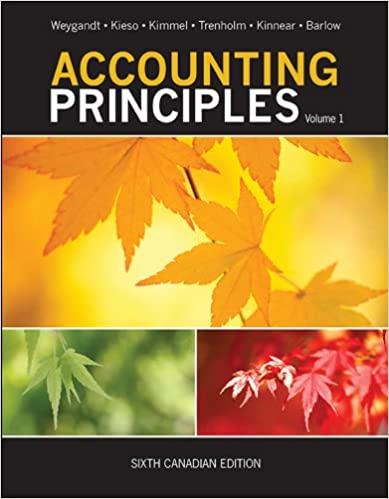vity-Based Costing d. Determine the amount of overhead assigned to the average residential job using activity-bases costing. Assume that the average residential job has 20 square Yards of plowing and 60 linear of snowthrowing. e. Discuss your findings from parts (b) and (d). Excel P IA (LO 1, 2, 3), AP Combat Fire, Ine, manufactures steel cylinders and nozzles for two models of fire extinguishers: (1) a home fire extinguisher and (2) a commercial fire extinguisher. The home model is a high-volume (54,000 units), half-gallon cylinder that holds 2 1/2 pounds of multi-purpose dry chemi- cal at 480 PSI. The commercial model is a low-volume (10.200 units), two-gallon cylinder that holds 10 pounds of multi-purpose dry chemical at 390 PSI. Both products require 1.5 hours of direct labor for completion. Therefore, total annual direct labor hours are 96.300 or [1.5 hours x (54,000+ 10,200)). Estimated annual manufacturing overhead is $1,584,280. Thus, the predetermined overhead rate is $16.45 or ($1,584,280 +96,300) per direct labor hour. The direct materials cost per unit is $18.50 for the home model and $26.50 for the commercial model. The direct labor cost is $19 per unit for both the home and the commercial models. The company's managers identified six activity cost pools and related cost drivers and accumulated overhead by cost pool as follows. Estimated Estimated Use Use of of Drivers by Estimated Cost Product Cost Drivers Overhead Drivers Home Commercial Pounds $ 80,400 335.000 215.000 120.000 Machine hours 150,500 35,000 27,000 8,000 Number of parts 412,300 217.000 165,000 52,000 Number of tests 51,000 25.500 15,500 10,000 52.580 Gallons 5,258 3.680 1,578 837.500 Pounds 335.000 215.000 120,000 $1,584,280 Instructions a. Under traditional product costing, compute the total unit cost of each product. Prepare a simple comparative schedule of the individual costs by product (similar to Illustration 4.3). b. Under ABC, prepare a schedule showing the computations of the activity-based overhead rates (per cost driver). c. Prepare a schedule assigning each activity's overhead cost pool to each product based on the use of cost drivers. (Include a computation of overhead cost per unit, rounding to the nearest cent.) d. Compute the total cost per unit for each product under ABC. e. Classify each of the activities as a value-added activity or a non-value-added activity f. Comment on (1) the comparative overhead cost per unit for the two products under ABC, and (2) the comparative total costs per unit under traditional costing and ABC. P4.2A (LO2), AP Writing Schultz Electronics manufactures two ultra high-definition television mod- la which sells for $1.600, and a new model, the Majestic, which sells for $1,300. The pro







